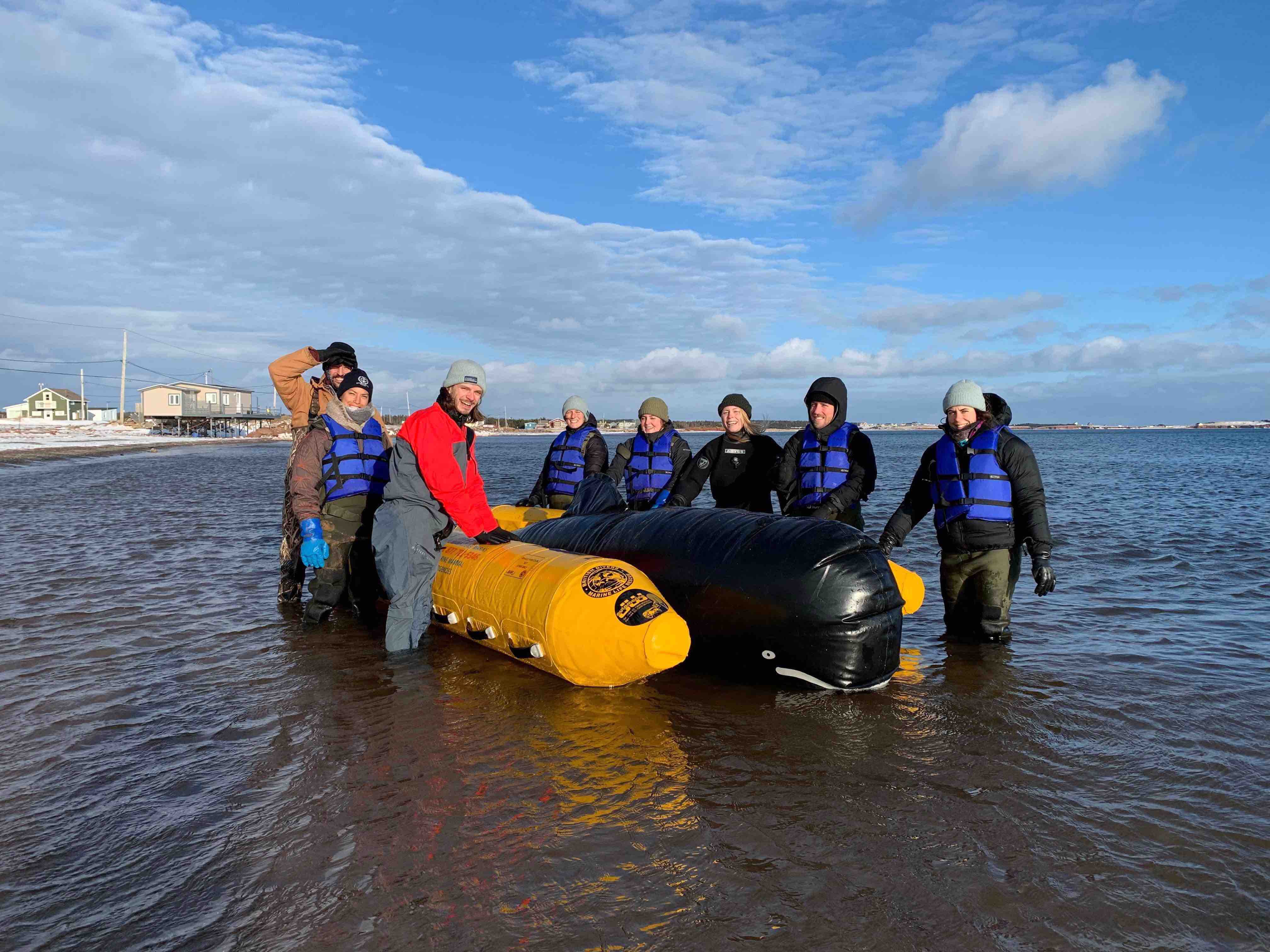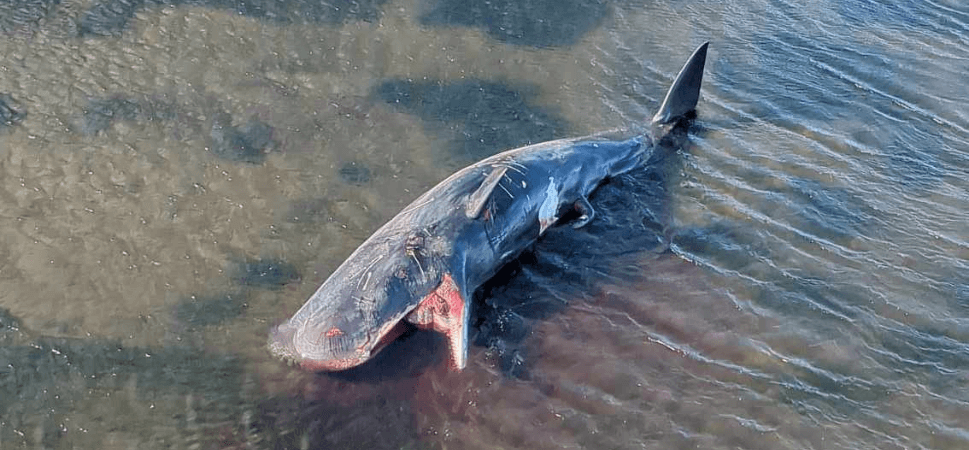Activity at the Call Centre 1-877-7baleine changes with the seasons; April and May are the months when we receive reports of young seals on shore, summer is peak season for the number of carcasses reported, and in fall there are often incidents involving live stranded cetaceans when storms and spring tides (Translator’s note: the latter are not named for the season) hit.
First report of a live seal on the beach

Earlier this week, residents of Sept-Îles reacted to photos of a young hooded seal, also known as a “blue back” because of its coat, which was stranded on Ferguson beach. Born in March, baby hooded seals are weaned after just four days, the shortest lactation period of any mammal. While adults migrate north after weaning, the young spend the summer roaming the Estuary and the Gulf of St. Lawrence, sometimes wondering upstream as far as the Montréal region! Seals rest on beaches or remain there throughout the moult. In harbour seals, which calve in May, young will often wait on the banks for their mothers to return. It is not at all unusual to see these animals lying on the shore, out of the water. Above all, we must not interpret this as if they are in trouble or need tending to. This is normal behaviour. Moreover, even if they look harmless and can appear endearing, one should not approach within 50 metres of these marine mammals or attempt to touch or interact with them. Bear in mind that these are wild animals that can be unpredictable or occasionally aggressive, bite and transmit disease.
First beluga carcass in Sainte-Félicité

On the other side of the St. Lawrence, the town of Sainte-Félicité was the site of the first beluga carcass reported in 2016. Local residents reported it to 1-877-7baleine early in the week; she had been stranded there since April 9. Fortunately, it was not washed away by the tide and a volunteer from the Quebec Marine Mammal Emergency Response Network went to the site Tuesday morning to secure the carcass until a specialist from the St. Lawrence National Institute of Ecotoxicology could arrive to take samples from the animal. The jaw of this adult beluga measuring over three metres long will be recovered to determine the precise age of the animal, and pieces of skin, fat and muscle will be collected for genetic and toxicological analyses. Since the early 1980s, an average of 15 to 20 beluga carcasses are found every year. These carcasses are studied in an effort to monitor the status of this declining population.





